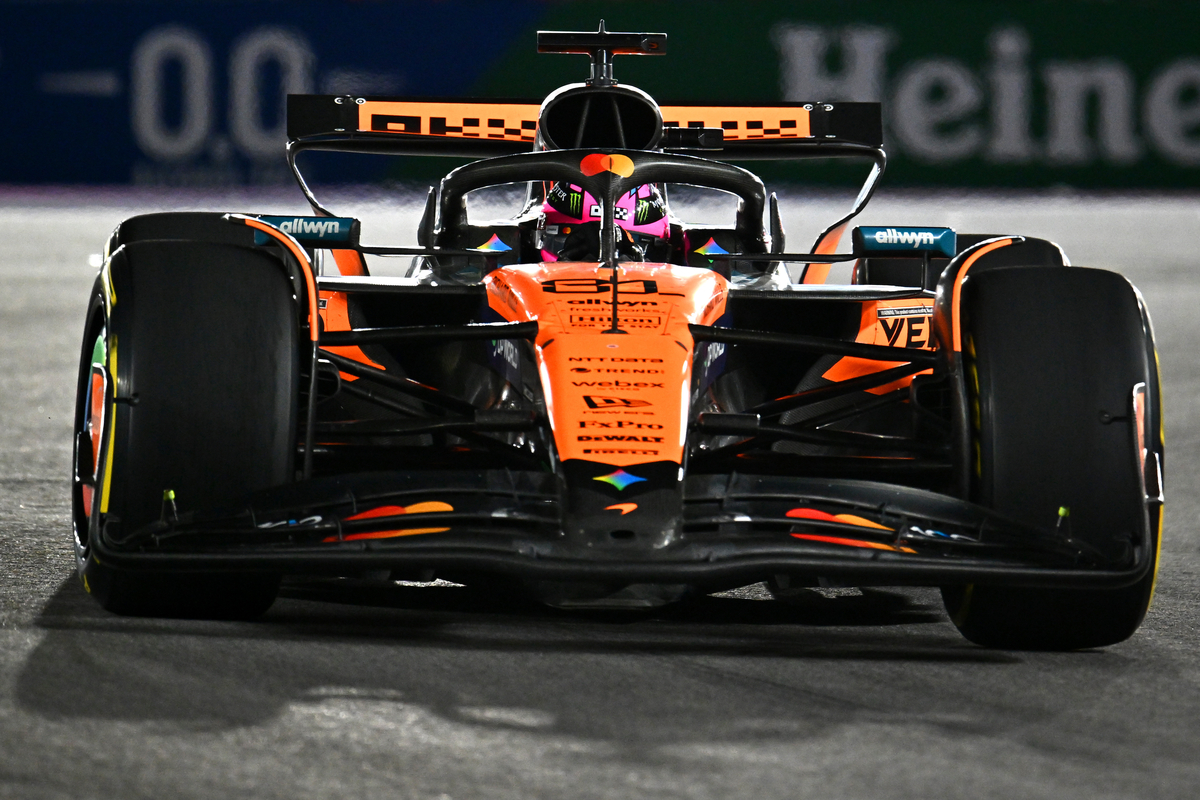Mercedes F1 trackside engineering director Andrew Shovlin has shared his insights into Kimi Antonelli’s jump start and the five-second penalty he received following his brilliant recovery drive from P17 to the podium at the Las Vegas GP on Saturday.
Struggling for grip in the rain-hit qualifying session, Antonelli only managed to set the seventeenth-fastest time under the lights at the Las Vegas Strip Circuit.
The Mercedes driver started the race on the softest compound, switched to the hard tyres under a VSC at the end of Lap 2, and ran that to the end.
The rookie held off Oscar Piastri on the road whilst running P4 but dropped behind the McLaren due to a five-second time penalty picked up for a jump start before the lights went out. He managed to stay ahead of Ferrari’s Charles Leclerc by only 1.9 tenths.
In the end, Antonelli gained a remarkable 12 places from his starting position with an exceptional drive. Given the post-race disqualifications for the McLaren drivers, he moved up in the classification and secured his third podium of the season.
Initial confusion regarding Antonelli’s jump start
Although the jump start was not strikingly evident on the broadcast, the FIA’s sensors detected Kimi Antonelli as moving before the five lights went out in Saturday’s Las Vegas GP.
The young Italian himself was puzzled and expressed the need to examine what had happened in the aftermath of the race.
“My suggestion is that I rolled a little bit, but I didn’t really feel it in the car,” the 19-year-old commented.
Meanwhile, Mercedes team principal Toto Wolff accepted the stewards’ verdict, claiming that he had perceived some slight movement in Antonelli’s grid box. However, he also noted that their preliminary investigation hadn’t spotted any irregular activity.
“We couldn’t spot anything on the clutch, nor anything that would have pointed us to an irregular start.
“But the FIA have sensors, so let’s see what they said.
“For me, I’m the only one who seemed to have seen that there was a little bit of a movement.
“But it definitely wasn’t by releasing the clutch or getting off the brake pedal, so we shall see what the FIA says.”
Jump start connected to release of the brakes, not dropping the clutch

Now that Mercedes have had the time to pore over the data, Andrew Shovlin explained in the post-Las Vegas GP F1 Akkodis Race Debrief that Kimi Antonelli’s marginal jump start was primarily down to releasing the brakes.
Maintaining that Antonelli hadn’t dropped the clutch, the Brit concluded that the W16 crept forward a couple of centimetres when the rookie lifted his foot off the brake pedal for a brief moment before the race start. Additionally, he surmised that vibration or torque in the car’s driveline might have prompted the imperceptible movement.
“When people talk about a jump start, they’re normally thinking the drivers drop the clutch before the lights have gone out to get a bit of a run on the competition. This was quite different and quite unusual.
“If you watch the video, what you see is before the lights go out, the car rolls about two centimetres forward very, very slowly. But Kimi [Antonelli] doesn’t drop the clutch. He’s actually got the clutch fully pulled.
“Now, we think what happened is, that point the car started to roll was the point he takes his foot off the brakes. So, as they get ready for the start, they remove their foot. And that’s only a second or so before the lights actually go out.
“And whether it’s the vibration of the car or, you know, there might have been some torque in the driveline, but it certainly wasn’t Kimi and the clutch that made it creep forward.”
Unfortunate Antonelli not at fault
Emphasising how reactive the FIA’s sensors are, Andrew Shovlin acknowledged that Kimi Antonelli was rather unlucky to receive a five-second penalty for the subtle jump start that almost cost him and Mercedes a podium at the F1 Las Vegas GP.
Furthermore, the 52-year-old clarified that Antonelli was not to blame for the infringement in Nevada and that he was following the team’s instructions accurately. He also added that the Brackley-based outfit intends to get on top of the issue to prevent its recurrence in the future.
“Now, the FIA systems are very sensitive. They can pick up on that small amount of motion, and when we eventually check the video with time to look at it properly, you could see this very, very subtle movement.
“So it was unfortunate for him to pick up that penalty. He was doing everything correctly in terms of what we tell him to do. But we just need to work out how to make sure that doesn’t happen again.”





